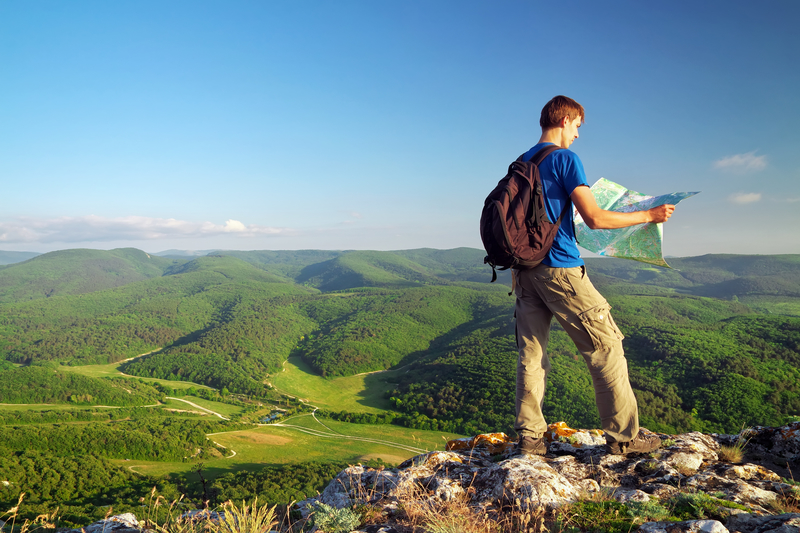No matter where you go if it is out in the woods, you can get yourself in trouble – even if civilization is literally within “spitting distance.”
These tips can help you, virtually in any situation where you find yourself outdoors for more than a few hours!
Carry some Aluminium foil in your bug out bag. The reason for this is if the ground is damp or wet and you can’t get a fire going lay out the foil and you will have an instant dry platform to build your fire.
Placing some masking tape over your flashlight reduces your profile yet giving you enough light to get things done. This is a handy tip from an SAS Friend.
If you carry a functioning analogue wrist watch then you can use it to find the north and south line. A little known trick but very handy. Hold your watch horizontal and point the hour hand towards the sun by set the angle between the hour hand and the 12 o’clock mark to get the north / south line. North will be the direction furthest from the sun.
Toothpaste can be used to treat bug bites and insect stings.
Tent pegs laid across 2 logs can be used as a make shift grill.
In wet conditions tinder can easily be acquired by shaving off strips of the inner bark of twigs and logs.
If you are purifying water say from a swamp but it smells absolutely dreadful add some charcoal to the water while you are boiling it and it will remove the unpleasant smell and slightly improve the smell.
The inner stands of 550 paracord are strong enough so you can tie equipment to your bag and make shelter without using up all of your paracord.
A foil blanket duct taped to the inside of a tarp shelter can massively increase the heat potential of your shelter.
Glow sticks should always be carried just in case you need to be rescued. Tie 3 feet of paracord to a glow stick and swirl it around to create a 6ft disk of light which will make it easy for rescue to spot you.
A disposable rain coat or poncho is a very useful multipurpose survival tool. 1. It can be used as a rain coat. 2. It can be manipulated as a make shift shelter. 3. It can be made to create a solar still to gather and purify sea water. 4. It can collect rain water for drinking.
NEVER under any circumstances use untreated water to clean wounds. It’s common sense but I have seen many people wash their wounds in a river. Also, don’t submerge your hands in water if you have cuts or grazes.
If you are stung by stinging nettles, remember the stinging sensation is caused by the needles injecting an acid into you. Combat this by spitting on the area immediately and scrubbing it hard with some clothing to get the acid off and out.
When packing your bag put all of the light equipment at the bottom and the heavy stuff on top to maintain your center of gravity.
If you are planning to move around a lot you should wear less clothing than you need.
As long as you keep in continuous motion and keep your head, hands and feet covered and dry you can drop nearly all of your extra layers and still be comfortable. The key is to avoid sweating in cold weather as your clothes will get damp and your clothing will lose its insulating qualities and you risk getting hypothermia.
Carry a pack of cigarettes. Even if you don’t smoke. Offering someone a cigarette can help you make friends or calm people down if they are suffering from stress or suffering from nicotine withdrawal.
Smoke is a natural insect repellent. If you have a fire going then wave your jacket, trousers, sleeping bag or your poncho etc around in the smoke to keep the mosquitoes and ants from eating you alive. A fire is also a natural predator repellent.
It may seem tempting to set your camp up next to a body of water but it’s a bad idea.
Bugs that hover over the water will eat you alive in the night especially if you are set up next to stagnant, non moving water. Set up camp on elevated ground a modest distance away from the water.
Raising both arms up into the Y position and back down erratically is the internationally recognized distress signal. Remember this.
If you see an animal drinking from a water source.. That does not mean the water is safe for you to drink. Most animals have the ability to eat and drink things that are harmful to humans.
A survival situation can arise at any time or place – you do not have to be miles from the nearest road or even miles from civilization.
If it does and you find yourself in a crisis, knowing how to ease that to make your ordeal easier, safer and more effective is your key to getting out in one piece.
To learn more survival tips, please visit Survive Hive.
